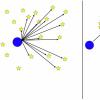There is no splitting of hairs.
When I was diagnosed with diabetes over 18 years ago the normal % back then was 5.9%.
https://www.medicine...ition_and_facts
Over the years they have pushed that number down to 5.7%. 5.0-5.2 is terrific and I commend you, but you deciding 5.5 as being the cutoff/alarm is not the standard to which the medical community uses. I posted references for what it is now and here what it was just a few years ago.
The room is not "significant" at 5.6% on avg. Again you would be looking at lowering blood glucose in a normal and healthy person. I would not want that from a vitamin. It should try to give your body what it needs to have your body do what it is supposed to do. Providing fuel for cells etc.... Just because people are obese doesn't mean their blood glucose has room for improvement. Sugar pill?? Are just trying to be antagonistic? If you think the effects on the liver shown in that study are minor results that may be placebo you either didn't read it or are just grinding out an agenda.
The fact that it was proven to be safe at high dosages while improving fatty liver is outstanding. The fact that it didn't negatively affect the other markers that were in the normal/healthy range is great news!
Medical community looks at the whole set of people (very healthy (sub 5), relatively healthy 5.0-5.7, pre-diabetic 5.7-6 and diabetic (6+) ) when setting "normal" ranges.
My goal, and I suppose that of most of the people here on Longecity, is to remain healthy for as long as possible so I focus on the first 2 subsets above when setting my range which is what I have been practicing. This skews the upper limit slightly downward compared to that of the general population.
The room is, in fact, significant - dropping into 5.2-5.4 from 5.7-5.9 would be meaningful - anything else is marginal for people looking to be healthy (not just slightly less sick).
You are contradicting yourself - on one hand, you say that you would not expect much from a VITAMIN then you are "happy" that it is safe at somewhat high doses (well, it is a vitamin, after all).
And yes, it is expensive for a vitamin - there is no question about that. If you disagree, show me another vitamin that costs that much per month for the same RDA %.
So I guess, my "agenda" is to say that NR is not worth its current cost for the reported benefits so far. IF that changes in the future for the better - more studies showing significant improvements in other important markers OR the cost goes way down - I will, of course, change my position.
The more important question regarding NAFLD impact - 1) could this have been due to eating healthier when one is a study participant (being more health-conscious) and, on the monetary side, and 2) can the same results be achieved via more affordable proven means?
I think we should use this study to look from more angles and for more avenues.
(Btw, in case you are wondering, I didn't rate your posts above.)
Edited by aribadabar, 14 July 2018 - 08:17 PM.































 This topic is locked
This topic is locked





























